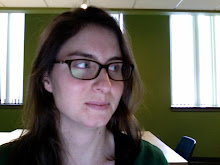It happened on a Saturday in June, about 2:00pm, on a strawberry farm in Fairfax, Vermont. Weston and I had been commissioned to help our friend Corbett scrape, chisel, and brush at an archaeological dig site he and some of his students have been working on for the last 2 years. Corbett's girlfriend, Maggie, and their dog Josie had come along too. They had found three fire pits among fields of Swiss chard and romaine, buried 2 feet below the worked soil. They knew the pits belonged to the Abenaki tribes, and they knew the last of the coals of the fires had gone out nearly 2,000 years ago, right around the turn of the first millennium.
We knelt barefoot next to one of the pits, dug out in a perfect square (3 feet by 3 feet in diameter), methodically scraping the top of the mud - or "Chocolate" as Corbett called it - until we got to black. Black being the coal, the coal being the remnants of a meal cooked hundreds and hundreds and hundreds of years ago. We scraped while Corbett told us the history of the world, as slowly and as meticulously as our blades were moving across the ancient ground. He started with 4,000 BC, ("When there were two miles of ice over our heads"), and went from there, in what seemed like 10 year increments. As the afternoon sun beat down on my back, my sweat dripped into the pit, and I was fascinated at how much modern man knew, and also at how much we still don't know. Here, we were looking for bits of discarded seeds or animal bones or tools that might tell us more about the lives of the original people of Vermont, back when there weren't state lines or political leanings or the Kardashians. Just food, shelter, and survival.
I took a break when there was a pause in the story of our earth's history (probably around 400 BC), and went behind Corbett's truck to pee. Josie was happy to have the company; she had been tied up to the truck all afternoon. When I started walking back through the fields to the pit, Maggie let out a piercing squeal. I watched as everyone gathered around to see what she had sifted out of the soil. Corbett looked fascinated, pulling and tugging on something small in his hands. When I finally returned to the site, they had gone back to work.
"It looked like someone had left a thumb print," Maggie told me, excited. "It was the perfect cut-out." After being significantly grossed out, the archaeologists tossed the piece of skin into the lettuce rows, surely shaken by the strangeness of the find. Corbett told us that if they found any part of a homo sapien, they'd have to pack up their shovels and go home. It's illegal to dig on Native American burial grounds. Things were quiet for the rest of the afternoon. Though we hadn't found a scull or a recognizable human remain, we still felt a blanket of silence come over us as we realized that real people, people with forefingers and thumbs, actually existed here, so long ago.
We drove home after a couple of hours with dirt stuck in all of our pores and redness from the sun spreading across our shoulders. We ate strawberries that we had picked and listened to Crosby, Stills & Nash, not talking much still. When we got home, I took a shower right away to wash the grime from off my hands and my feet, barely able to stand from exhaustion. I had to sit on the edge of the tub to wash my feet, and as I scrubbed I felt something odd and looked down. On the ball of my foot, there was a perfect circle missing just below my big toe. An old blister from a few weeks ago. A new artifact, tossed into the romaine leaves.
Tuesday, June 26, 2012
Subscribe to:
Post Comments (Atom)

No comments:
Post a Comment